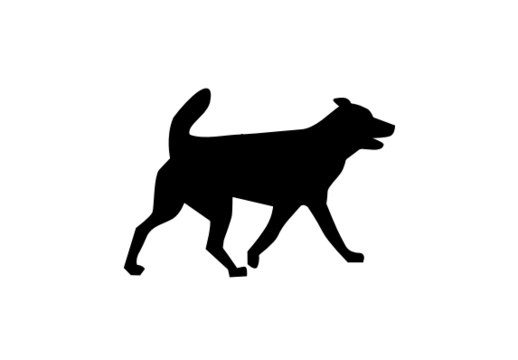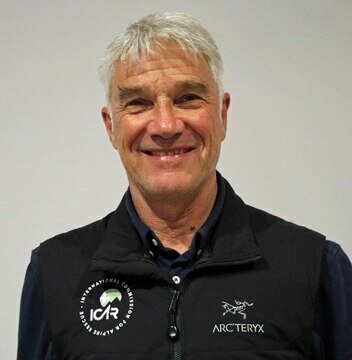Dog-Handlers Sub-Commission

The ICAR Sub-Commission Dog-Handlers is led by a President. Now an ICAR Sub-Commission on its own, it used to be attached to the ICAR Avalanche Rescue Commission in the past. The Sub-Commission is committed to its common interests and has the aim of developing exchange and training recommendations for rescue dogs in action. It basically pursues the same objectives as ICAR: Creating a platform for exchange of experiences, allowing everyone to learn from others.
The Dog-Handlers come together upon the annual ICAR Convention, where some practical work is done during the Pre-Convention Workshop and meetings take place during the main conference days. Every other year the leaders of the Dog-Handlers meet for a separate 4 day workshop.
The dog itself is a living being with an individual personality and therefore cannot be trained by standardized general methods. That's where the exchange of experience amongst the Dog-Handlers becomes very important.
There has been great development in the portfolio of the ICAR Dog-Handlers in recent years. 10 years ago the focus was limited to the Avalanche Rescue Dogs. Today ICAR Dog-Handlers are active in all of the following divisions/disciplines:
-
Air Scent Dogs: All humans, alive or dead, constantly emit microscopic particles bearing human scent. Millions of these are airborne and are carried by the wind for considerable distances. The air scent dog is the type most frequently encountered. This dog finds lost people by picking up traces of human scent that are drifting in the air, and looks for the "cone" of scent where it is most concentrated. This dog will not normally discriminate scents, so there is the possibility of a "false alarm" if other people (searchers, citizens) are nearby. Air Scent dogs work best in situations such as large parks or private lands that are closed at the time, since the dog will home in on any human scent. The success of an air scent dog will be affected by a number of factors, including wind conditions, air temperature, time of day, terrain and presence or absence of contamination (auto exhaust, smoke, etc.). The best conditions for air scent dogs to work are early mornings or late afternoons on cool, cloudy days when there is a light wind.
-
Trailing Dogs: The trailing dog is often referred to as a "tracking" dog, although "tracking" and "trailing" are not the same to the purist. The trailing dog is directed to find a specific person by following minute particles of human tissue or skin cells cast off by the person as he or she travels. These heavier-than-air particles, which contain this person's scent, will normally be close to the ground or on nearby foliage, so the trailing dog will frequently have its "nose the ground," unlike the air scent dog. A bloodhound is typically trained for scent discrimination. Each dog is usually worked in a harness, on a leash, and given an uncontaminated scent article (such as a piece of clothing) belonging to the missing person. The dog follows that scent and no other. At times, the dog may track, following the person's footsteps, or air scent, and home in on the subject's scent. Field contamination (scent of others) should not affect his work. He should be able to trail scents on pavements, streets, grass, water, etc. If there is a good scent article and a point where the person was last seen, a trailing dog can be the fastest way to find the victim. Without the scent article and a point where the person was last seen, these dogs cannot work effectively.
-
Tracking Dogs: A tracking dog is trained to follow the path of a certain person. It physically tracks the path of the person, without relying on air scenting. This dog is usually worked in a harness and on leash. This type of dog is effective when pursuing a lost person (search and rescue operation) if no scent article is available.
-
Disaster Dogs: A disaster dog is trained to find human scent in very unnatural environments, including collapsed structures and areas affected by severe storms, earthquakes and other disasters. This dog is trained to work on unstable surfaces, in small, confined spaces and other settings not usually found in the wilderness.
-
Cadaver Dogs: A cadaver dog reacts to the scent of a dead human. The dog can be trained for above ground and buried cadaver searches. Although many dogs have the potential to detect human scent, whether dead or alive, the cadaver dog is trained to locate only human remains. The training process includes detection of very minute pieces of cadaver or even blood drops in a specified area.
-
Water Search Dogs: A water search dog is trained to detect human scent that is in or under the water, focusing on the scent of the bodily gases that rise up. As a team, the handler and dog usually work in a boat or along the shoreline. Because of currents and general changes in the water, it can be hard to pinpoint the location of a body. To enhance the chance of location, a diver should be ready to search as soon as the dog indicates. Additional teams, unaware of the previous teams' findings, work independently to indicate a location. This allows team members to determine the most likely location of the body.
-
Avalanche Search Dogs: An avalanche search dog is trained to detect human scent that is in or under snow, subsequent to an avalanche. These dogs are trained to detect the scent under deep of snow.
Based on these diverse divisions/disciplines (source of English descriptions: USSARTF), there will be exciting and interesting upcoming workshops and intense exchange of examples among the ICAR Dog-Handlers.
The ICAR Sub-Commission Dog-Handlers is looking forward to a close cooperation with all other ICAR Commissions. The open exchange and lots of learning effects shall strengthen the dog as a rescue partner with its excellent abilities.
Further images

Links
-
20191011-DOG Zakopane Poland-VIDEO
(external link to vimeo.com)
-
President of the Dog-Handler Sub-Commission
(external link to alpine-rescue-production.makandra.de)